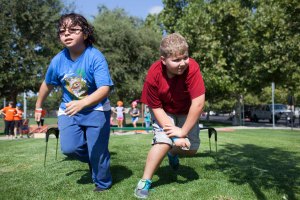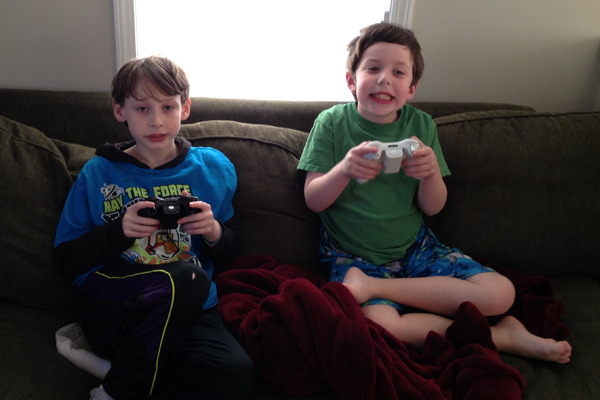A blog by Zamzee’s CEO, Lance Henderson
I recently heard from a woman named Cyndi who is working hard to keep her family healthy. Cyndi has struggled with her weight, and now two of her daughters do as well. In fact, Cyndi’s girls were both recommended by their pediatrician to attend a wellness camp designed to teach healthy eating habits and help overweight kids become more active. Research shows that a lack of physical activity puts Cyndi’s daughters at risk for a range of serious health problems, and Cyndi felt ashamed. She has committed herself to changing her family’s health habits, but change is hard. And the healthcare system Cyndi and millions of Americans look to for support is largely focused on treating illnesses, not preventing them.
Fortunately, as part of the camp experience, Cyndi and her daughters were asked to try an innovative program that combines a motivational website with an activity tracker to get kids moving more. According to Cyndi, the effect was transformative. The program was fun for the kids, taking advantage of the power and appeal of technology to encourage healthy behavior, and it was something they could use at home. Cyndi saw a significant positive change in her daughters’ level of physical activity as a result.
Unfortunately, this success story for Cyndi and her kids highlights an insidious paradox in our healthcare system: the lack of funding for tools to prevent, not just treat, illness. Providing the new prevention tool to kids and families at the wellness camp Cyndi and her girls attended required philanthropic support. Insurance wouldn’t cover it, and the hospital running the camp had limited resources to support new, innovative programs on an ongoing basis. Had Cyndi’s daughters become obese, her pediatrician could have easily prescribed an expensive bariatric surgery (at a cost of $25,000 or more), but there is no routine, sustainable mechanism for low-cost prevention programs to be prescribed and reimbursed by a health plan. I see this as a deeply troubling problem within our healthcare system – a “prevention paradox.”
The economics of prevention vs. treatment are complex. Comparing the cost of treating one individual to the cost of providing a prevention tool to many is overly simplistic. But it’s time to confront the fact that we need to establish pathways that allow prevention tools to be recommended, prescribed and paid for as routinely as pills and surgeries. As a result of the Affordable Care Act (ACA) and the expansion of Medicaid enrollment, new populations are entering the health system, often with higher prevalence of chronic disease driven by sedentary behavior and obesity. This is a ticking time bomb for our healthcare system, one that threatens the foundation of healthcare finance and the health of the next generation. Prioritizing prevention at an early age can help address lifelong chronic conditions like diabetes, obesity and heart disease, with positive results for quality of life and healthcare costs. 
The good news is that providing access to practical prevention tools is more achievable than ever before. With the proliferation of new sensor technologies, mobile care delivery tools, and the changes catalyzed by the ACA, the calculus between prevention and treatment may finally begin to shift. Critical for this to succeed, however, will be a deeper and broader body of evidence that proves the efficacy of prevention tools.
Demonstrable impact on health outcomes and costs are key. As one example, the hospital running the camp that Cyndi and her girls attended chose to experiment with Zamzee, the tech-based physical activity program, in part because a randomized controlled study, sponsored by HopeLab and the Robert Wood Johnson Foundation, demonstrated that the motivational online experience and activity tracker got kids moving 59% more than a control group. This is promising research, but healthcare providers and payers need more data to make the bottom-line decisions that drive healthcare spending. Cross-sector partnerships are needed to help build and disseminate trusted evidence so that the leap of faith seemingly required for prevention spending becomes a rational investment in our health—and an effective strategy for reducing the cost of healthcare for current and future generations.
Ultimately, providing prevention tools to large populations can be sustainable only if they are fully integrated into health systems—and that means operational and financial integration, not reliance on the generosity of philanthropists and small pockets of innovation within the healthcare industry.
Cyndi and her daughters represent millions of kids and families struggling to be healthy against great odds. We face unprecedented challenges to our health and healthcare system, and if we are to meet these challenges, we need evidence-based tools that we can put into the hands of consumers that inspire and maintain active, healthy lifestyles. Building evidence and changing the payment landscape to make these tools widely available is the work that lies ahead. And each of us—healthcare providers and payers, public policy makers, parents and caring citizens—can play a role in creating a system of healthcare that makes sense for the long-term. Let’s start by focusing on prevention and investing in the health of our kids.
Lance is Chief Executive Officer of Zamzee, a research-proven product and program that motivates kids and families to be more physically active. Prior to joining Zamzee, Lance served as Vice President, Program and Impact at the Skoll Foundation, where he led an international grant-making and investment program supporting social entrepreneurs. He has extensive experience in finance, fundraising, and executive leadership roles with organizations focused on health and behavior change, including the San Francisco AIDS Foundation and Pangaea Global AIDS Foundation.




